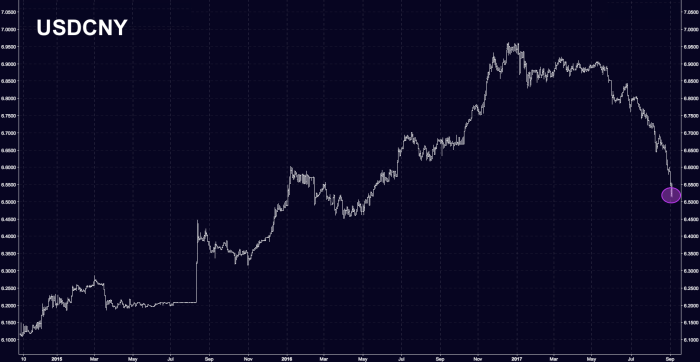In case you haven’t noticed, the haven appeal of the euro is growing. Ditto for the yuan.
As far as the latter is concerned, we’ve been characterizing the yuan as a high-yielding haven for a while and indeed that point seems to come up at least twice a day. We were dead right when, on August 10, we described the yuan as the market’s new have asset but we were dead wrong to say you had missed the rally.
Because despite being overbought at the time, the onshore yuan marched to its best month since revaluation in August and the offshore yuan would go on to post a record breaking, 14-day win streak against the dollar – a streak that looks like it will come to an end on Tuesday.
This is of course all down to the fact that China is promoting stability in the lead up to the Party Congress and it’s helped along by tighter capital controls, a soaring stock market, and an economy that refuses to roll over in earnest. The result: a near 16-month high for the yuan:

And then there’s the euro. This is all down to policy convergence with the U.S. and relative political stability. Yesterday, we described the “then-and-now” juxtaposition between December 2016 and where things currently stand as follows:
Part and parcel of [euro strength] is the fact that what started the year as a policy divergence theme (Fed tightening, U.S. yields rising on assumed reflationary momentum from Trump’s agenda set against a patient ECB that’s starting from behind anyway), has morphed into a policy convergence theme (Trump agenda priced out, Treasury yields at or near YTD lows, Fed hamstrung by fiscal gridlock while incoming data in Europe firms up, etc.).
The result: a euro that’s the strongest since January 2015:

That’s the backdrop against which you should consider the following piece from Bloomberg’s Mark Cranfield amusingly called “Currency Havens for Millennials”…













Leave A Comment